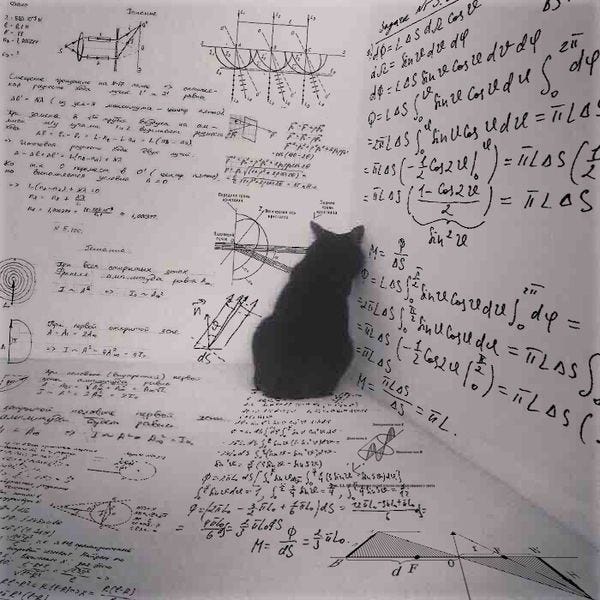My name is Sarah Salviander, and I am the perfect atheist experiment.
I was raised atheist in a secular country. I was raised as atheist as it is possible to be raised: no churches or temples, no scriptures or holy books, no discussions about God or gods. Through most of my childhood, I had no idea who Jesus Christ was.
As a kid, I loved science above all things. It was my raison d’être, my reason for being.
I went to university, and eventually became a PhD astrophysicist. I worked for 16 years as a research scientist in one of the largest academic institutions in the world.
By all rights, I should’ve stayed an atheist.
But I didn’t.
Halfway through my PhD, I converted to Christianity.
First, my atheistic naturalism began to crumble when I began to think deeply about the mystery of existence.
Then, a year later, I came to belief in God. Believe it or not, it was mostly through science that I came to this belief.
A few years after that, I chose to become Christian. Mostly because the evidence in favor of Christianity compelled me. I also wanted what Christianity had to offer—forgiveness of sins, eternal life, and limitless love.
It hasn’t been easy. In some ways, I miss the simplicity of my former atheist life. When the Enemy thinks you’re one of his own, he doesn’t bother you much.
Converting to Christianity turned my world upside down. It has been at turns exhilarating, joyful, mind-expanding, terrifying, and heartbreaking. I’m still trying to make sense of it.
My newsletter
I started Schrödinger’s Poodle in March of 2023 as a place where I could document my ongoing conversion to Christianity.
That may sound like an odd thing to say—isn’t conversion a one-and-done thing?
Maybe.
But, personally, I don’t think I’ve stopped converting.
Every day I learn something new about God, Jesus Christ, and the Holy Spirit. Every day, I learn something new about myself in my relationship with them. Every day I recommit to my faith.
In a sense, I don’t think we ever stop converting until the day we meet God face-to-face.
Why “Schrödinger’s Poodle”?
You’ve probably heard of Schrödinger’s cat. It's the infamous characterization of quantum weirdness put forth by Erwin Schrödinger, one of the architects of quantum physics.
Here’s how it goes.
Imagine putting a cat in a sealed box along with a vial of poison and a mechanism that breaks the vial and releases the poison. The mechanism depends on the random release of a radioactive particle. If the particle is released, the vial is broken, and the cat dies. If the particle is not released, the vial remains unbroken, and the cat is alive.
While the box is sealed up, it can’t be known whether the particle is released or unreleased, so the quantum mechanical system is thought to be in the simultaneous superposition of two states—released and not-released. Which means, since the quantum mechanical system is tied to the macroscopic system of the poison and the cat, that the cat is also simultaneously in a superposition of two states—dead and alive.
But when you open the box, you will observe, not two superposed states of alive-cat and dead-cat, but one or the other. The cat either greets you with a meow, or it has passed on.
The name Schrödinger’s Poodle alludes to two things.
First, I love cats. My freshman physics professor also loved cats. He couldn’t bear to frame the thought experiment in terms of his favorite creature, so he changed it to “Schrödinger’s poodle.” Apologies to poodle-lovers out there, but I sympathize with Dr. Pryor. My grandparents had a succession of snippy poodles beloved by no one except for my grandparents.
But here’s the irony…
…this little guy who’s the mascot for my Substack? This is Andy—he’s named after one of my grandmother’s more ferocious poodles. I was originally unsure of Andy’s outcome in the Schrödinger experiment, but he’s turned out so gosh-darned cute, I’ve come to adore him. So, I’m loading the dice—he’ll probably live.
Second, Schrödinger’s Poodle alludes to the mystery of existence. There are all kinds of possibilities; it’s only when we open the metaphysical box that we find out what’s inside.
If you can’t afford a paid subscription
If you’re in a tough situation and not able to afford a paid subscription at this time, I’d love to comp you a free year. All you have to do is:
Send me an email at schrodingerspoodle [at] gmail [dot] com requesting an upgraded subscription
Tell me one fun or interesting thing about yourself: your favorite book, your hobby, an interesting experience you had, something about your pet (pics of pets appreciated), anything at all
and I’ll add you to the list.
Social media
Follow me here on Notes
I also post on X: @sarahsalviander





